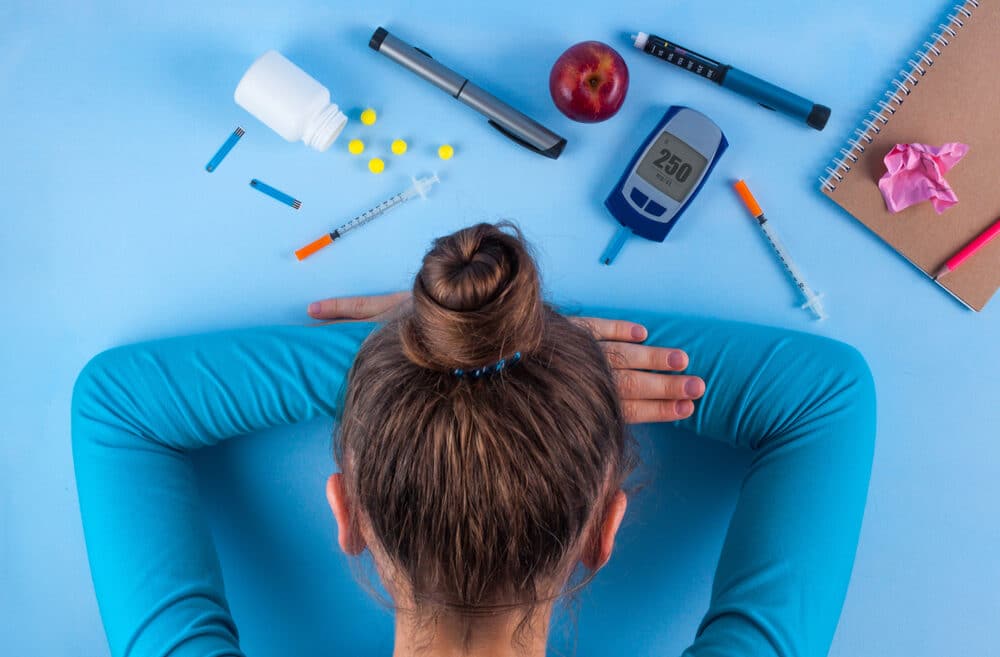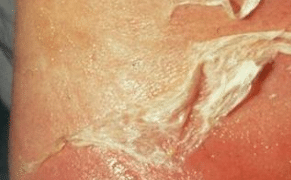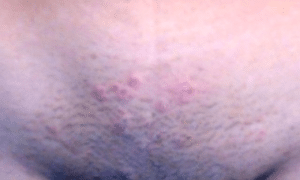Types of diabetes Mellitus, the relation between insulin and pancreases
Diabetes mellitus is a metabolic disorder characterized by high blood glucose levels in the blood and relative insulin deficiency, resistant, or both.
Insulin is the key hormone involved in the storage and controlled release of chemical energy available in food, allowing glucose in the body to enter cells, providing the energy for cells to function.
Insulin synthesized in beta cells inside the pancreas.
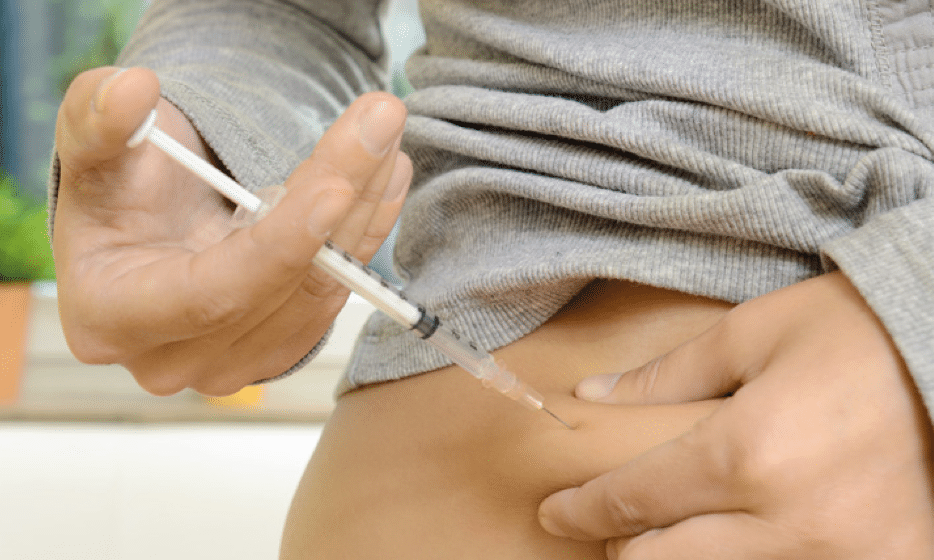
The main organ of glucose regulation is the liver, which absorbs and stores glucose (glycogen) and releases it into the circulation between meals to maintain the glucose level in peripheral tissue.
Glucose consumed and taken up by brain, fat, and muscle tissue.
When blood sugar (glucose) rises the pancreas releases insulin to the blood to lower the glucose level to achieve the hemostasis phase.

Types of diabetes Mellitus
Types of diabetes Mellitus are based on insulin there are two types of diabetes. Type one diabetes (insulin-dependent) and type 2 diabetes (non-insulin-dependent) represent tow diseases from the epidemiological point of view, but clinically can sometimes be difficult.
Types of Diabetes Mellitus: Type 1
in this type of diabetes the pancreases failed to produce insulin due to autoimmune disease.
Type 1 diabetes often appears during childhood or adolescence. Also, called juvenile diabetes.
Causes of type 1 diabetes
- Genetic susceptibility: type 1 diabetes is not genetically predetermined, but increase susceptibility of the disease may be inherited.
- Autoimmunity: studies and shreds of evidence suggested that type 1 diabetes is an immune-mediated disease. Autoantibodies directed against pancreatic and mistakenly destroy insulin-producing cells.
- Environmental factors: early exposure to specific types of viruses such as Coxsackie B4 may increase the incidence of the disease.
Symptoms of type 1 diabetes
Diabetes type 1 symptoms are typical and may come sudden but, the symptoms may be mild, common symptoms include:
- Frequent urination (polyuria).
- Increased thirst (polydipsia).
- Sever hunger (polyphagia).
- Weight loss.
- Extreme fatigue.
- Blurred vision.
- Slowly healed bruises.

Complications of type 1 diabetes
Death in young patients is mainly related to diabetic nephropathy, heart disease, and peripheral vascular disease. The complication of type 1 diabetes include:
- Macrovascular disease: heart and blood vessel disease, diabetes is a risk factor in the development of atherosclerosis. Which may cause heart attack and high blood pressure.
- Microvascular disease: microvascular disease is specific to diabetes.
- Eye damage (diabetic retinopathy): diabetic can affect the eyes in many ways such as blindness, cataract, and glaucoma.
- Kidney damage (diabetic nephropathy): high glucose levels may damage the kidney by elevating the glomerular filtration rate due to renal hypertrophy (an increase in the kidney size). Ischemic changes due to a decrease in blood flow to the kidney. Ascending infection occurs because of bladder stasis and infection damage to renal tissue.
- Nerve sheets damage (diabetic neuropathy): high blood glucose level damage or delay the velocity of nerve conduction.
- Foot damage: ten to fifteen percent of diabetic patients develop foot ulcers. High blood glucose level decreases the blood flow to the feet and increase the risk for feet complication and may lead to amputation.
- Skin damage: high blood glucose level may leave you at risk for skin infection both bacterial and fungal.
- Pregnancy and diabetic: high blood glucose for pregnant can be a serious problem for both the baby and mother.
Risk factors of type 1 diabetes
- Family history.
- Environmental factors
- Geography.
- Autoantibodies.

Diagnosis of type 1 diabetes
A high level of blood glucose is the basic criterion for the diagnosis of diabetes.
Assessment and diagnostic evaluation performed to diagnose diabetes.
Based on American Diabetes Association (ADA) diabetes is a random blood sugar more or equal to 200 mg/or fasting plasma glucose greater than or equal to 126mg/dL or A1C level of 6.5 or higher.
There are several tests include:
- Random blood sugar.
- Glycated hemoglobin (HBA1C).
- Fasting plasma glucose test.
- A blood test to check for antibodies.
- Kidney function and Urine test.
- Thyroid function test.
The Treatment of type 1 diabetes
Type 1 diabetes patients need long term treatment.
- Monitor blood sugar level: frequent testing the blood sugar is the only way to keep your child within the target range.
- Medication therapy: includes rapid-acting insulin, short-acting insulin, intermediate-acting insulin, and long-acting insulin.
- Healthy eating: understanding what and how much to feed your child can be challenged. You better seek a dietitian to help you.
- Physical activity or exercise: exercise is extremely important in diabetes management and helps to lower the blood glucose level by increasing the uptake of glucose by the muscles.
Types of Diabetes Mellitus: 2
In this type of diabetes the cells failed to respond to insulin probably due to obesity and lack of exercise.
Type 2 diabetes can develop at any age and it’s more common than type 1.
It occurs more commonly among people who are older than 30 years of age and obese.
For most patients, type 2 diabetes is detected incidentally, long term diabetes complications may develop before the actual diagnosis is made.
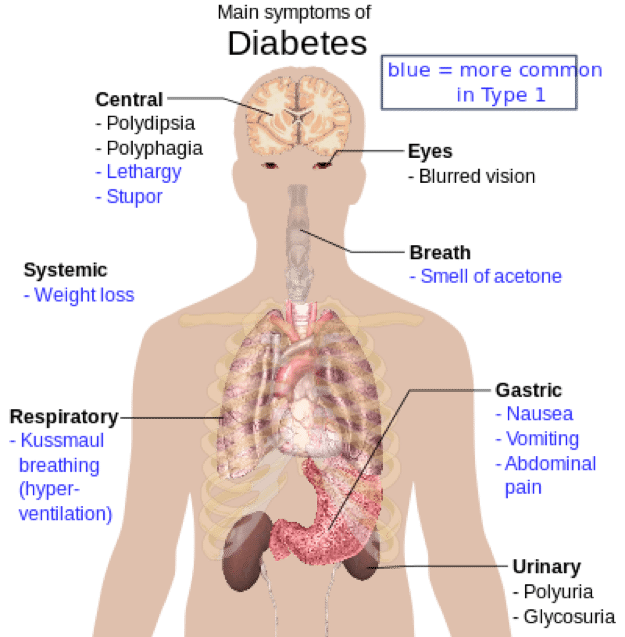
Type 2 diabetes causes
- Genetic factors and environmental factors: obesity and an inactive lifestyle.
- Pancreatic malfunction: The pancreas doesn’t make insulin, the pancreas does make little insulin, or tissue doesn’t respond to insulin.
Type 2 diabetes symptoms
- Frequent urination.
- Increase thirst.
- Increase hunger.
- Weight loss.
- Frequent infection.
- Fatigue.
- Blurred vision.
- Slowly healed sores.
Type 2 diabetes diagnosis
Because type 2 diabetes is incidentally discovered, these are the tests that may discover it
- HBAIC.
- Fasting blood sugar.
- Random blood sugar.
- Medical and family history.
- Physical examination.
Parameters that should regularly be assessed are:
- Medical history.
- Physical exam.
- Laboratory test.
Type 2 diabetes complications
A complication of type 1 diabetes include:
- Macrovascular disease: heart and blood vessel disease, diabetes is a risk factor in the development of atherosclerosis. Which may cause heart attack and high blood pressure.
- Microvascular disease: microvascular disease is specific to diabetes.
- Eye damage (diabetic retinopathy): diabetic can affect the eyes in many ways such as blindness, cataract, and glaucoma.
- Kidney damage (diabetic nephropathy): high glucose levels may damage the kidney by elevating the glomerular filtration rate due to renal hypertrophy (an increase in the kidney size). Ischemic changes due to a decrease in blood flow to the kidney. Ascending infection occurs because of bladder stasis and infection damage to renal tissue.
- Nerve sheets damage (diabetic neuropathy): high blood glucose level damage or delay the velocity of nerve conduction.
- Hearing problems
- Sleeping apnea: sleeping apnea is a sleep disorder in which breathing continuously stops and starts.
- Alzheimer’s disease: although it is not clear why the risk of Alzheimer’s disease increase with type 2 diabetes but, the bad control of blood sugar increases the risk of Alzheimer’s disease.
- Foot damage: ten to fifteen percent of diabetic patients develop foot ulcers. High blood glucose level decreases the blood flow to the feet and increase the risk for feet complication and may lead to amputation.
- Skin damage: high blood glucose level may leave you at risk for skin infection both bacterial and fungal.
- Pregnancy and diabetic: high blood glucose for pregnant can be a serious problem for both the baby and the mother.
Type 2 diabetes Risk factors
- Family history.
- Obesity.
- High level of triglyceride.
- Inactivity.
- Age.
- Race.
- Prediabetes.
- Dark skin in the armpit and neck.
- Hypertension.
- Depression.
- Polycystic ovarian syndrome for women.
- Gestational diabetes for women.
Type 2 diabetes treatment
- Blood sugar monitoring: frequent testing the blood sugar is the only way to keep your sugar within the target range.
- Weight loss: weight reduction has a significant impact on blood sugar levels.
- Regular exercise: exercise is extremely important in diabetes management and helps to lower the blood glucose level by increasing the uptake of glucose by the muscles.
- Healthy eating: understanding what and how much fat and calories to consume with vegetables and fibers can be hard? You better seek a dietitian to help you.
- Medication: Medication is the last option if the steps above didn’t decrease your blood glucose level. The antihyperglycemic medication varies, depend on your condition your doctor will start the medication therapy regarding your condition.
For more information about the acute complication of diabetes: diabetic ketoacidosis and hyperosmolar hyperglycemic state. You may also need to know about gestational diabetes, please visit:
https://en.wikipedia.org/wiki/Diabetic_ketoacidosis
https://en.wikipedia.org/wiki/Hyperosmolar_hyperglycemic_state
https://en.wikipedia.org/wiki/Gestational_diabetes
For further information please visit
https://www.niddk.nih.gov/health-information/diabetes/overview/what-is-diabetes
Pulmonary Edema Causes and Treatment
Jamil Qaryouti is a nursing specialist who graduated from J.U.S.T University in Jordan. Jamil has a wide verity of experience in cardiac diseases, pulmonary and neurological disease, former ICCU nurse in the Specialty Hospital in Jordan, former CNO of home care, founder of Jamil’s Home Health Corporation. Jamil is a medical educator. He believes spreading the information makes the world better.


